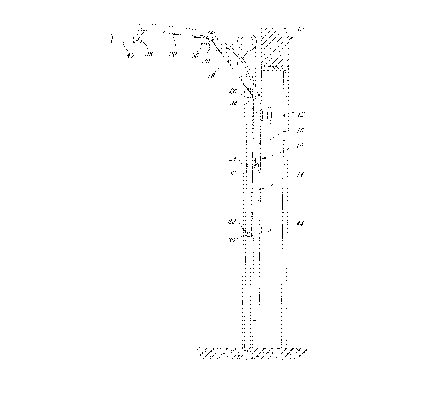Une partie des informations de ce site Web a été fournie par des sources externes. Le gouvernement du Canada n'assume aucune responsabilité concernant la précision, l'actualité ou la fiabilité des informations fournies par les sources externes. Les utilisateurs qui désirent employer cette information devraient consulter directement la source des informations. Le contenu fourni par les sources externes n'est pas assujetti aux exigences sur les langues officielles, la protection des renseignements personnels et l'accessibilité.
L'apparition de différences dans le texte et l'image des Revendications et de l'Abrégé dépend du moment auquel le document est publié. Les textes des Revendications et de l'Abrégé sont affichés :
| (12) Demande de brevet: | (11) CA 2270614 |
|---|---|
| (54) Titre français: | DISPOSITIF DE PROTECTION DES DOIGTS POUR PORTE SECTIONNELLE |
| (54) Titre anglais: | FINGER PROTECTING ARRANGEMENT IN A SECTIONAL ROLL-TYPE DOOR |
| Statut: | Réputée abandonnée et au-delà du délai pour le rétablissement - en attente de la réponse à l’avis de communication rejetée |
| (51) Classification internationale des brevets (CIB): |
|
|---|---|
| (72) Inventeurs : |
|
| (73) Titulaires : |
|
| (71) Demandeurs : |
|
| (74) Agent: | LAVERY, DE BILLY, LLP |
| (74) Co-agent: | |
| (45) Délivré: | |
| (22) Date de dépôt: | 1999-05-03 |
| (41) Mise à la disponibilité du public: | 2000-11-03 |
| Licence disponible: | S.O. |
| Cédé au domaine public: | S.O. |
| (25) Langue des documents déposés: | Anglais |
| Traité de coopération en matière de brevets (PCT): | Non |
|---|
| (30) Données de priorité de la demande: | S.O. |
|---|
In a rolled-type door, such as a sectional garage door, wherein
a plurality of horizontal vertically adjacent are hingedly connected together
at their adjacent inside edges, a series of finger protecting joint members
are
disposed longitudinally between the adjacent panels. Each end face of an
adjacent panel is formed of a front and rear section defining a gap
therebetween in which is lodged a longitudinal sealing member. The end
faces of adjacent panels include complementary convex and concave sides
which, when the panels are angularly hinged relative to one another,
eliminates the presence of a gap usually present in conventional doors
thereby preventing accidental wedging of the fingers of the door operator.
Note : Les revendications sont présentées dans la langue officielle dans laquelle elles ont été soumises.
Note : Les descriptions sont présentées dans la langue officielle dans laquelle elles ont été soumises.

2024-08-01 : Dans le cadre de la transition vers les Brevets de nouvelle génération (BNG), la base de données sur les brevets canadiens (BDBC) contient désormais un Historique d'événement plus détaillé, qui reproduit le Journal des événements de notre nouvelle solution interne.
Veuillez noter que les événements débutant par « Inactive : » se réfèrent à des événements qui ne sont plus utilisés dans notre nouvelle solution interne.
Pour une meilleure compréhension de l'état de la demande ou brevet qui figure sur cette page, la rubrique Mise en garde , et les descriptions de Brevet , Historique d'événement , Taxes périodiques et Historique des paiements devraient être consultées.
| Description | Date |
|---|---|
| Demande non rétablie avant l'échéance | 2005-05-03 |
| Inactive : Morte - RE jamais faite | 2005-05-03 |
| Réputée abandonnée - omission de répondre à un avis sur les taxes pour le maintien en état | 2005-05-03 |
| Inactive : Abandon.-RE+surtaxe impayées-Corr envoyée | 2004-05-03 |
| Demande publiée (accessible au public) | 2000-11-03 |
| Inactive : Page couverture publiée | 2000-11-02 |
| Inactive : CIB attribuée | 1999-06-22 |
| Inactive : CIB attribuée | 1999-06-22 |
| Inactive : CIB en 1re position | 1999-06-22 |
| Exigences de dépôt - jugé conforme | 1999-06-03 |
| Inactive : Certificat de dépôt - Sans RE (Anglais) | 1999-06-03 |
| Demande reçue - nationale ordinaire | 1999-06-02 |
| Date d'abandonnement | Raison | Date de rétablissement |
|---|---|---|
| 2005-05-03 |
Le dernier paiement a été reçu le 2004-03-18
Avis : Si le paiement en totalité n'a pas été reçu au plus tard à la date indiquée, une taxe supplémentaire peut être imposée, soit une des taxes suivantes :
Veuillez vous référer à la page web des taxes sur les brevets de l'OPIC pour voir tous les montants actuels des taxes.
| Type de taxes | Anniversaire | Échéance | Date payée |
|---|---|---|---|
| Taxe pour le dépôt - générale | 1999-05-03 | ||
| TM (demande, 2e anniv.) - générale | 02 | 2001-05-03 | 2001-04-20 |
| TM (demande, 3e anniv.) - générale | 03 | 2002-05-03 | 2002-04-22 |
| TM (demande, 4e anniv.) - générale | 04 | 2003-05-05 | 2003-04-28 |
| TM (demande, 5e anniv.) - générale | 05 | 2004-05-03 | 2004-03-18 |
Les titulaires actuels et antérieures au dossier sont affichés en ordre alphabétique.
| Titulaires actuels au dossier |
|---|
| PIERRE JUNEAU |
| Titulaires antérieures au dossier |
|---|
| S.O. |